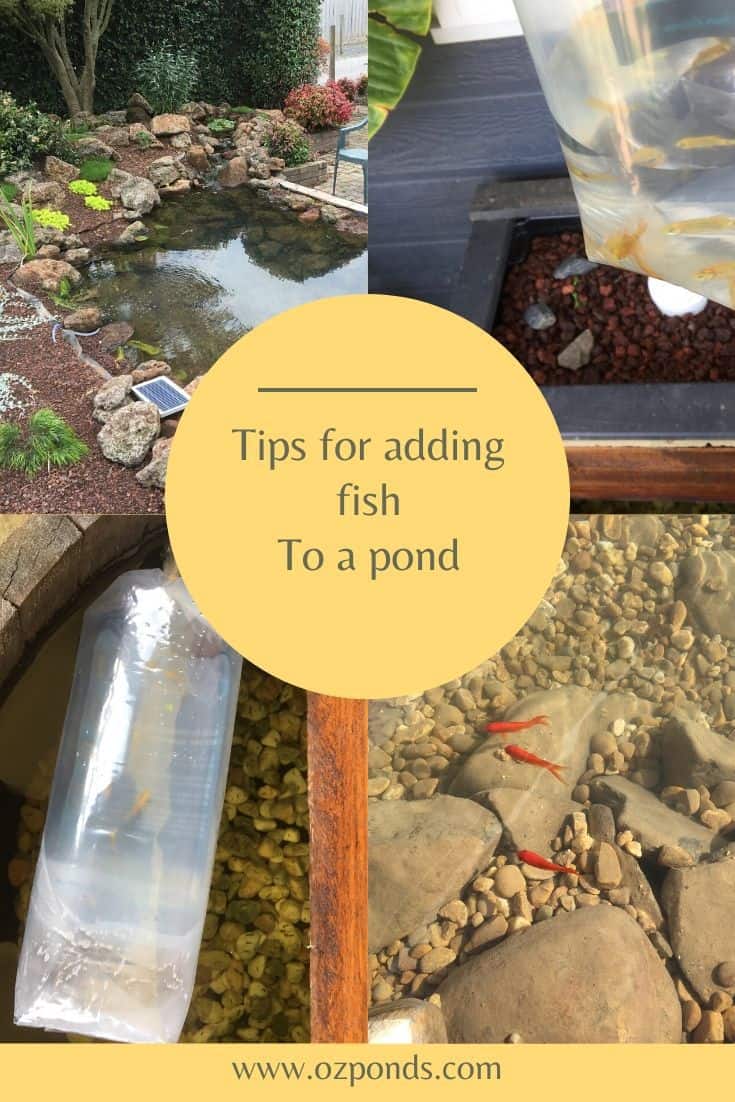Adding fish to a pond is always really exciting! Fish really make the pond come to life.
Having fish in the pond is also very practical.
- They are the ultimate mosquito controllers!
- Pond fish will eat algae
- Fish provide movement and excitement
When adding fish to a pond there are a few simple things to be aware of before throwing them in.
1. Is the pond water fish safe?
If the pond is a new pond the water needs to be safe for the fish.
The fist step is removing any chlorine or chloramine.
Mains water contains one or both of these compounds to make water safe for humans.
The problem is it will kill off bacteria. Beneficial bacteria is incredibly important for fish health.
So if filling the pond with mains water ensure you use a de-chlorinator to neutralise chlorine and chloramine.
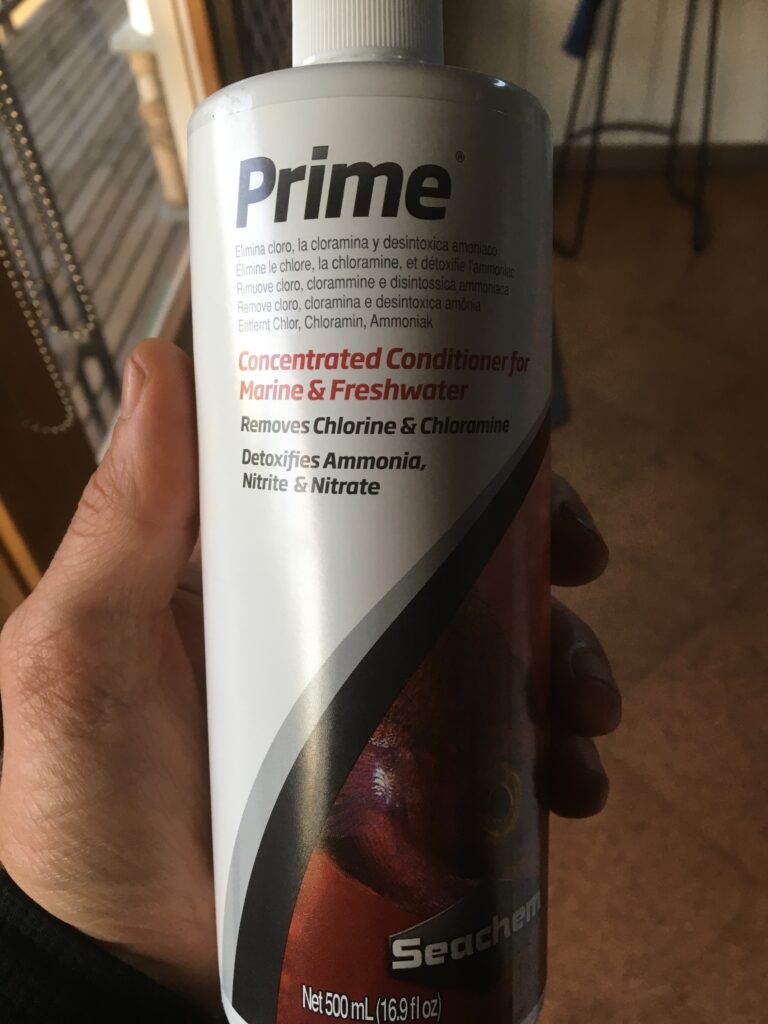
Fish produce ammonia.
Ammonia is toxic to fish.
For a new pond to be safe it for fish it needs to “cycle”.
Cycle refers to the nitrogen cycle.
This is a natural process involving beneficial bacteria. Basically it’s a cycle that coverts toxic ammonia into much safer nitrate.
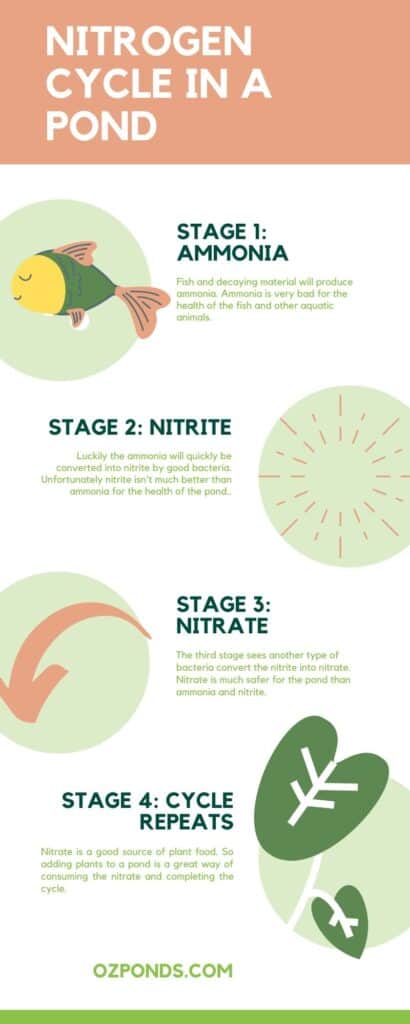
This process will occur naturally but can take quite sometime to fully complete. In new ponds often 8 weeks or longer.
If like me you are much too impatient, you can add beneficial bacteria.
This will kickstart the nitrogen cycle and ensures there are beneficial bacteria in the water ready to process the ammonia the fish will create.
If the pond is an existing pond (older than 8 weeks) and provided the water hasn’t been recently replaced or the pond totally cleaned out, you can be pretty sure that the nitrogen cycle is in full swing and your pond water is safe for fish.
If you are unsure and want to test the water parameters consider buying an api test kit to test the water parameters.
Now that the water is fish safe we can buy some fish.
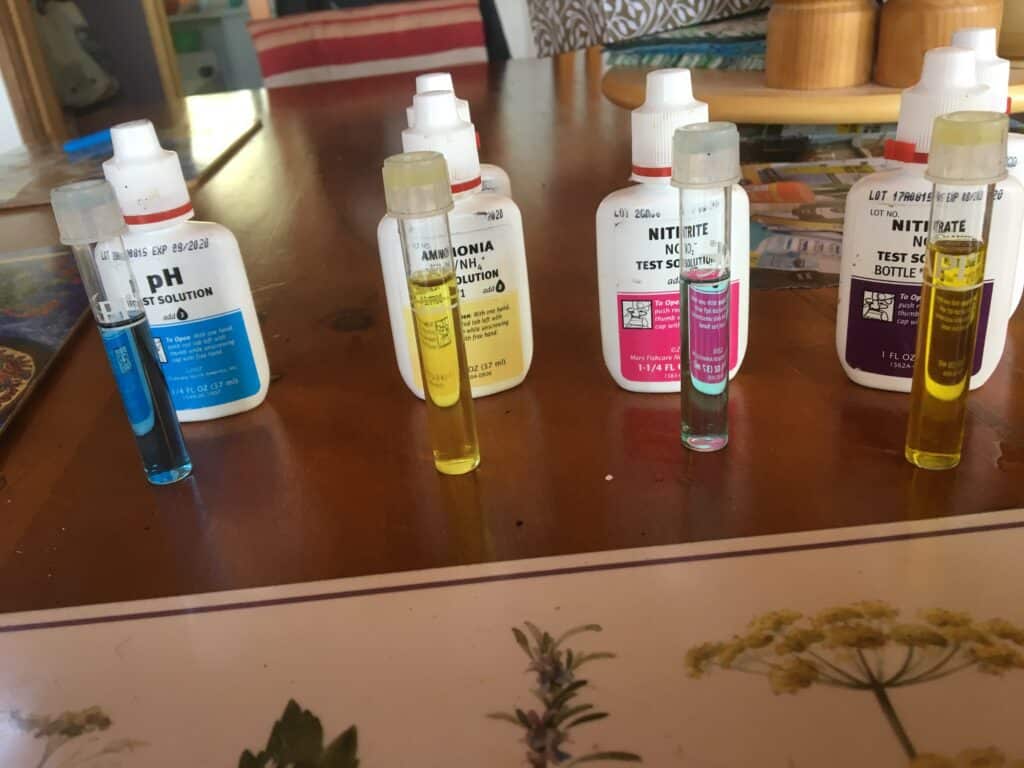
2. Don’t add too many at once
So as we now know the fish we add to our ponds will produce ammonia.
The ammonia needs to be converted into nitrate by beneficial bacteria.
If we add to many fish at one time this can be too much for the bacteria to process.
This will cause an ammonia spike and possibly fish deaths as a result.
The safest way to add fish is a few at a time. This allows the beneficial bacteria time to grow so they can process the ammonia.
I like to wait 3-4 weeks between adding more fish.
Keep adding a few at a time until your pond is stocked with a sensible number.
If you’re unsure on how many fish you can put in your pond, read this article on fish stocking in a pond.
3. Select healthy fish
Selecting pond fish is really fun! Im kinda addicted to going into my local fish shop and emerging with new fish.
Having a local fish dealer is a very useful resource. They will know what fish will survive outdoors in your local area.
Sourcing fish locally is wise as these fish are already adapted to your local climate and water parameters.
When selecting fish there a a few things to keep an eye on.
Avoid fish with any of the following symptoms:
- White spots on their bodies or fins (Could be parasites or fungal/ bacterial infection)
- Scratches (Scratches can be a sign of a parasite and can also lead to infection)
- Discolouration (A sign of poor health)
- Cloudy eyes (A bacterial infection)
- Struggling to swim to the bottom (Bladder disease)
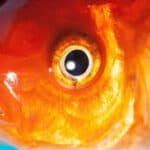
Almost all problems with fish arise from poor water quality and stress.
Fish in pet shop tanks are often overstocked which can lead to some of the above problems.
Select fish that look vibrant and healthy.
4. Transport to minimise stress
When transporting the fish they require water, oxygen and stable temperature.
Practically all fish stores will supply your fish in a fish bag filled with water and air.
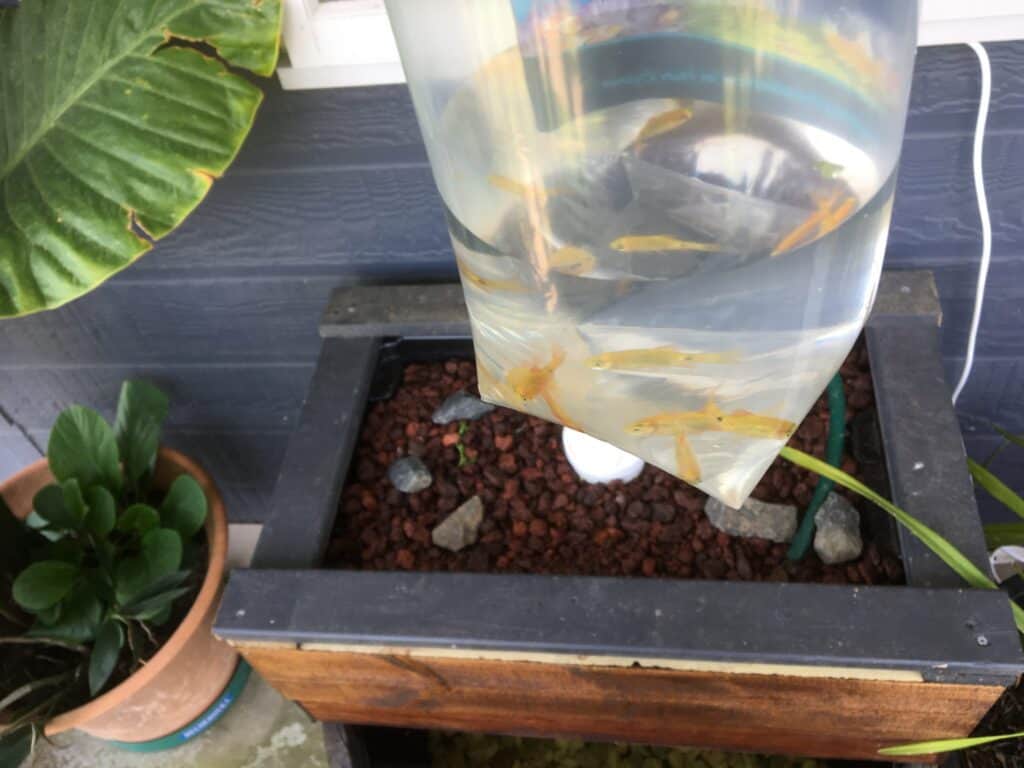
This supply of water and air will easily last a few hours provided the bag isn’t over crowded.
But if you listened to my advice there’s only a couple of fish in there anyways.
I have had silver perch posted to me for my aquaponics system. They were in the bag for approximately 24hrs and all arrived happy and healthy.
This is because they were kept well insulated in a styrofoam box. Sort of like a cheap esky.
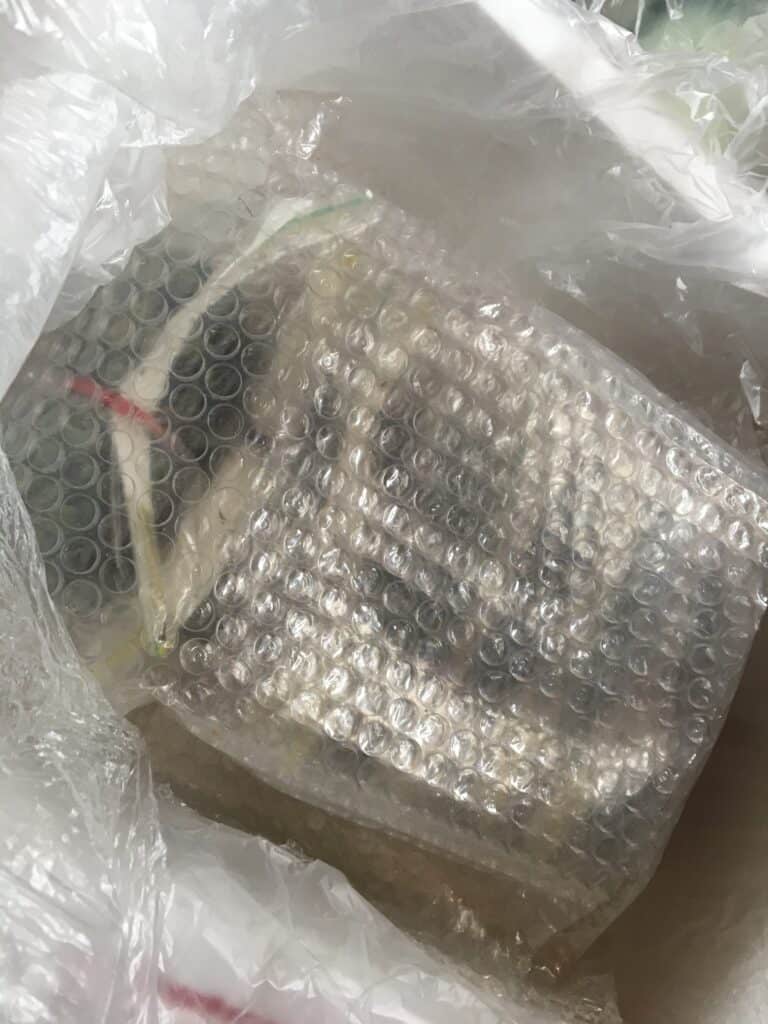
The biggest threat during transportation is temperature extremes either hot or cold.
Because that transport bag is small, it will quickly be impacted by the surrounding air temperature.
So if you can take along an esky or Styrofoam box to place the bag in.
5. Acclimatise
Once we get the fish home we want to transition them from the bag into the pond gradually.
First float the bag in the pond for around 20minutes. This allows the temperature in the bag to match the pond temperature.
Next open the bag and add a cup or 2 of pond water. This will help bring any water pH differences closer together.
The pH in your pond may be different to the pH they are currently living in.
You can re-seal the bag and wait 5-10 minutes and add a couple more cups of pond water.
An even better way is to place the fish in a bucket and use a piece of aquarium air line to slowly drip water from the pond into the bucket.
This acclimatises them very slowly. Watch the video below showing how i acclimatised some shrimp for a small pond.
Keeping the fish happy & Healthy
1.Keep the water healthy.
This is very easy with the right filtration. Filtration doesn’t need to be expensive or complicated. Providing a home for beneficial bacteria should be the main priority.
The bacteria power the nitrogen cycle. A healthy, functioning nitrogen cycle will equal healthy, happy fish!
A fantastic way to supersize your bacteria colony is adding a bog or wetland filter.
In my opinion you just can’t beat a bog/ wetland filter!
They are easy to build and filter water in a way that is completely natural and in harmony with nature.
Click here to read my article on bog/ wetland filtration.
2. Don’t overfeed.
Feeding your pond fish is an incredibly enjoyable past time but don’t overdo it!
Many new pond owners will kill their fish with kindness.
Fish always act as if they are starving!! Excessive feeding will put unnecessary strain on the ponds filtration system. It’s also not healthy for the fish.
I actually don’t feed my pond fish. There is plenty of food within the pond- mosquito larvae, bugs that fall in and plants.
If you are going to feed your pond fish use a good quality fish food.
You want to look for a food with around 40% protein. Avoid foods that get the protein from cornmeal. Fish meal is where the protein should be coming from.
Only feed an amount that the fish will eat in 2 minutes!
3. Don’t overstock your pond.
Again this will but a stress on your filtration system. If the beneficial bacteria cannot keep up with the waste being produced water quality will suffer.
This will lead to algae blooms due to the excessive nutrients but also fish stress.
Stress and poor water quality are the number one factor in fish becoming sick.
I have an article discussing how many fish you can put in a pond.
4. Provide shelter.
This can be in the form of plants, rocks or fish caves.
Plants are an excellent source of shelter for your fish. They can hide amongst the foliage and roots when they sense danger.
Plants are also great natural filters!
Rocks and fish caves will provide small nooks and crannies for the fish to hide from predators. I love adding rocks to a pond.
Not only does it make the pond look more natural but beneficial bacteria will colonise the entire surface of the rocks.
Some popular pond fish
There are many different breeds of fish that are suitable for keeping in ponds. Obviously the most popular are koi and goldfish.
Koi and goldfish are so popular because:
- They have incredible colours.
- They grow to a good size (so you can easily see them)
- Will tolerate a wide variations in temperatures from freezing to an Australian summer!
- Very easy to care for.
- Easy to buy.
It’s worth noting, here in Australia that koi are not legal in all states. NSW, ACT and WA are the only states where keeping koi is allowed at time of writing.
Goldfish however are still sold and allowed in all states. Just never allow them to escape or release them into native waterways.
Other popular fish for ponds are:
Rainbow fish– Rainbows are a native fish and there are heaps of different species available in the aquarium trade. They are quite a pretty fish and do really well in ponds.
Pacific blue eyes– These little guys are another native fish. They are great for wildlife ponds where you want to have tadpoles and fish.
For a more comprehensive list of suitable pond fish read our article on best pond fish for Australia.
I you haven’t already be sure to subscribe to our mailing list for special deals and offers on pond related products.

